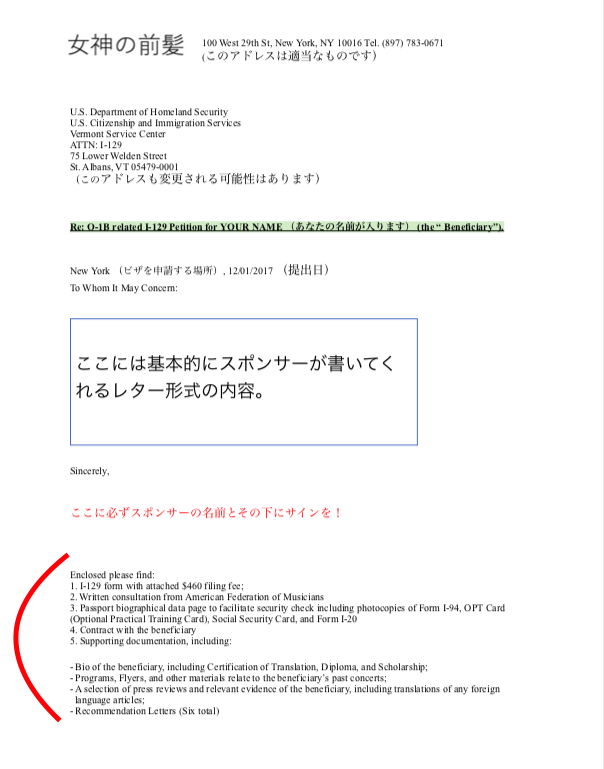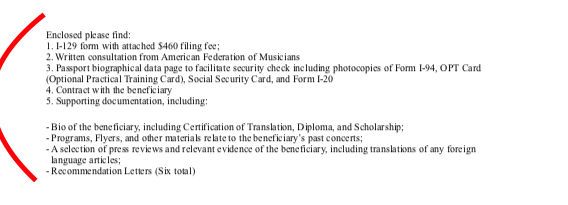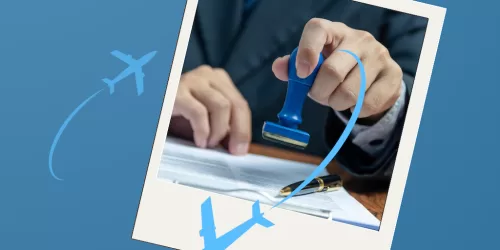Visa Application: What is a Cover Letter and How to Write It?

Artist Visa Application: What is a Cover Letter and How to Write It?
- 1 Artist Visa Application: What is a Cover Letter and How to Write It?
- 1.0.1 The Basic Structure of the Artist Visa Cover Letter
- 1.0.2 What Goes After the Header?
- 1.0.3 Key Elements to Highlight in Your Cover Letter
- 1.0.4 What Does “Enclosed Please Find” Mean?
- 1.0.5 What Should Be Included in the Document List?
- 1.0.6 Supporting Documents That Can Help Your Case
- 1.0.7 How to Organize Your Application for Clarity
- 1.0.8 Conclusion
When applying for an Artist Visa, the cover letter is one of the first documents you will submit. It serves as a formal request from your employer or sponsor (the petitioner) for your visa approval. Below the heading, you’ll find a summary of the enclosed documents, much like a table of contents in a book.
In this article, I’ll walk you through the structure of the cover letter and explain its components to help you prepare a successful Artist Visa application.
The Basic Structure of the Artist Visa Cover Letter
The cover letter follows a professional business format, similar to the one used by companies with headers. The company’s logo is typically placed on the left, while the address and contact information are on the right. Below the header, you’ll include the address of the immigration office where you are submitting your application. Note: Be sure to verify the address for each application, as it may change depending on the state or content of your submission.
What Goes After the Header?
After the header, you will include the following subject line:
Re: O-1B related I-129 Petition for YOUR NAME (the “Beneficiary”).
In this line, replace “YOUR NAME” with the name of the visa beneficiary. Beneficiary refers to you, the person applying for the visa, but remember that the petitioner (your employer or sponsor, or their lawyer) is the one submitting the application.
Key Elements to Highlight in Your Cover Letter
The language in your cover letter may vary depending on whether you hire an attorney to help with your application. If an attorney is involved, the letter will likely include more technical terms such as “EXHIBITION 1” and “EXHIBITION 2” in the list of supporting documents. However, the basic structure and content will remain the same. The most important thing is to keep the cover letter clear and easy to understand.
What Does “Enclosed Please Find” Mean?

At the beginning of the list of documents, you’ll often see the phrase:
Enclosed please find:
This means that all the necessary documents are attached to the file, and the immigration officer can refer to the following list to find them. This section acts as a table of contents for your Artist Visa application.
What Should Be Included in the Document List?
The list includes critical documents that support your application. The most important items to include are:
- Form I-129 and the filing fee ($460): Make sure this is clearly marked and attached to the cover letter.
- Written Consultation from a union or other relevant entity.
- Personal Documents: Passport, Social Security card, and any other personal identification documents.
- Employment Agreement or sponsor contract.
- Personal Background Materials: A detailed account of your education, career, and artistic accomplishments.

These documents should be listed first as they are the most critical to your application.
Supporting Documents That Can Help Your Case
The second part of the document list includes supporting materials that help demonstrate your qualifications. These materials are not as essential as the first items but can strongly support your application:
- Resume or CV detailing your professional experience.
- Awards or scholarships you’ve received.
- Programs or concerts you’ve performed at.
- Press or media mentions, along with their English translations if necessary.
- Letters of Recommendation (usually six letters).
Each of these documents should be organized and easy to locate. It’s recommended to use black-and-white copies for clarity and highlight your name in pink or yellow to make it stand out. By organizing your materials in a clear and logical manner, you make it easier for the immigration officer to find key information quickly.
How to Organize Your Application for Clarity
Ideally, your cover letter will help the immigration officer navigate the contents of your application by creating an easily accessible and organized file. This is especially important when you have multiple supporting documents. It’s perfectly fine to creatively organize your file, but it’s essential that it remains clear and easy to follow.
Conclusion
In this article, I’ve shared a detailed overview of the Artist Visa cover letter, including its structure and how to organize your supporting documents. The cover letter plays a vital role in guiding the immigration officer through your submission. By preparing a well-organized cover letter and supporting list, you can ensure that your application is smooth and professional.
Make sure your sponsor or employer writes the cover letter for you, and start by organizing your documents to make the process more manageable. Good luck with your Artist Visa application!
Learn More About Choosing the Right Sponsor for Your Artist Visa


